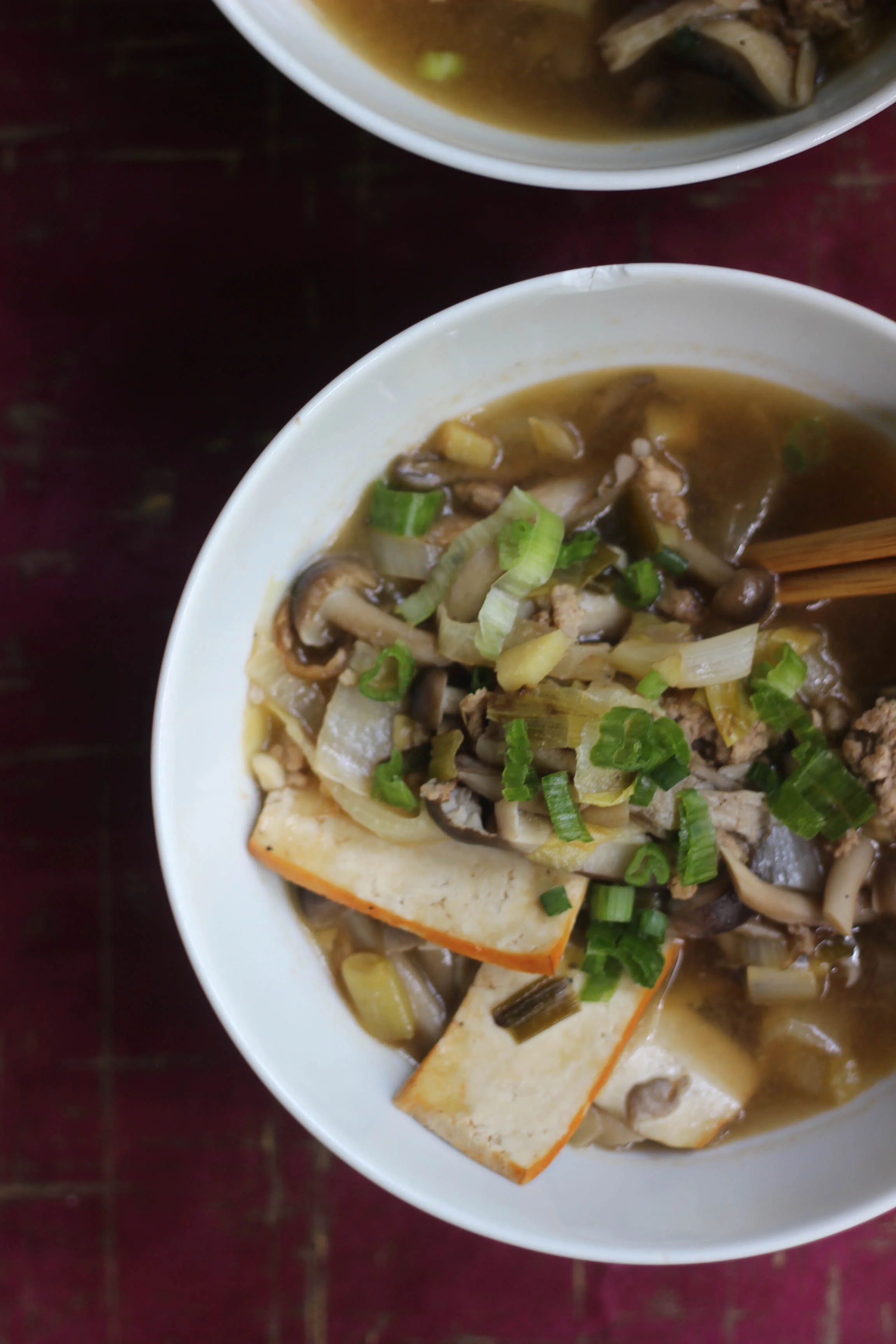As anyone who watches Food Network Star knows, you can’t just be a good cook and an engaging TV personality. You have to have a CULINARY POV. This might seem simplistic -- I can’t be boxed in! -- but just think about it. Bobby Flay = Southwestern flavors and grilling. Giada De Laurentiis = Italy meets California. Ina Garten = simple but luxurious crowd-pleasers.
But I’m a home cook and I basically just cook what I feel like. There’s no reason to limit my repertoire in the same way, say, an executive chef has to. Bobby Flay can’t just decide to serve ramen at Bobby’s Burger Palace.
The casting agency even asks you in the very first application: What is your culinary POV?
So I had to do some soul searching. Do I cook modern, flashy foods? Or do I go healthy? Or, as my husband suggested, do I make side dishes my POV?
I’ve watched enough seasons of Food Network Star to know that your best, most authentic culinary POV is never some convoluted, contrived thing. In fact, it’s the cuisine that’s right under your nose. What you grew up with. What you crave.
I love my "ethnic" supermarkets, my international cookbooks, my food travel shows. My family lives all around the world in Madagascar, China, France, and Norway. It took me a hot sec to realize it, but my culinary POV is: easy international cooking tweaks -- with a focus on Asian cuisine.
When I say “easy”, I mean no special equipment or hard-to-find ingredients. I mean food that can be transformed using a simple spice blend or sauce. I mean demystifying ingredients that’ve been staring you down at the grocery store, daring you to tackle them.
Which brings me to hot and sour soup. If you’ve had it, it’s very likely you don’t even know what’s in it. Pork and mushrooms, okay. But bamboo shoot, wood ear mushroom, lily flowers? Even I don’t really know what lily flowers look like. Once I *thought* I bought them, but they turned out to be pickled mustard greens. Based on the ingredient list, you might think hot and sour list is out of your reach.
But I’m here to tell you -- it’s not! It’s actually a really easy soup that you can make with items you can find at any grocery store -- not even a fancy one.
RECIPE
(adapted from Joanne Chang's Food 52 recipe)
1 tsp olive oil
½ lb ground pork (I used 80% lean, but feel free to use whatever.)
7 scallions, sliced
5 cloves garlic, minced
1 inch knob of ginger, minced
1-1 ½ lb mushrooms, chopped to bite-size (I used a combination of beech, shiitake, and oyster. You can use any combination you like, or even dried.)
32 oz chicken broth
1 tsp sugar
3 tsp soy sauce
1 tsp sesame oil
8 oz firm tofu cut in ¼” slices (I used baked tofu, which is denser than regular tofu, but either works.)
½ cup unseasoned rice vinegar (if you can't find unseasoned, just skip the sugar in the recipe and proceed as normal)
1 tsp white pepper
2 endives cut in ¼” slices
Add oil to a large pot and heat on medium-high until shimmering. Add pork, separate the meat, and cook until some of the fat is rendered out, about 1-2 minutes. Add scallions, garlic, and ginger. Season and cook until aromatic and slightly browned, about 2-3 minutes. Add mushrooms and season again. Cook mushrooms until they have reduced by half, 4-5 minutes.
Add chicken broth, sugar, soy sauce, and sesame oil. Bring to a boil then simmer for 1 minute. Add tofu, rice vinegar, white pepper, and endives. Simmer for 2 minutes. Serve hot!
TIPS & TRICKS
White pepper might be the most esoteric ingredient in this recipe. You can substitute black pepper no problem, but I’d encourage you to add white pepper to your pantry. White pepper is actually the same plant as black pepper, but it’s just processed differently. It has a musky heat that’s characteristic of Chinese dishes, and is an easy Asian twist you can add to any dish that normally calls for black pepper.
Why endive? Endive isn’t a typical hot and sour soup ingredient -- or an Asian ingredient for that matter -- but it does a great job pinch hitting for bamboo shoot’s bitterness and lily flowers’ crunch.
I don’t like gloopy soup, so I don’t use cornstarch or any other thickener. Chef’s prerogative!
Many recipes might call for you to add the mushrooms with the broth. You know this type of mushroom, whether it’s hot and sour or tom yum soup. It’s spongy and floats around. It’s fine! But I want a full-bodied soup so I cook the mushrooms down *before* I add the broth. This concentrates their flavor and makes sure they aren’t water-logged and flabby once the broth is added.
Adding the vinegar and white pepper at the last minute is key. Cook either of them too long, and you'll lose the hot and sour of hot and sour soup.



